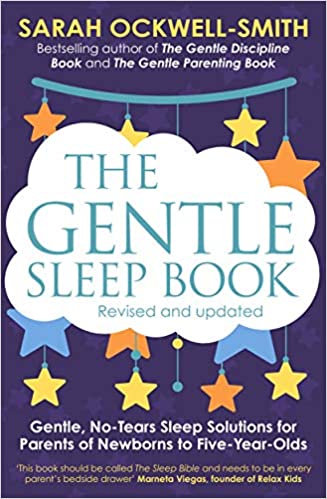The chart below is going viral on social media. I am perplexed about why, since it is completely incorrect.

I have no idea what research this guidance is based upon, however I expect the answer is ‘none’. There are several problems with this chart, which I will detail below:
Sleep Needs Are Individual
Each and every person in the world, young or old, has a UNIQUE sleep need. We are not all the same and we do not need the same things, sleep included. As individuals our sleep needs change daily, based upon what is happening in our lives. If we are ill we need more sleep, if all is well we can get away with less. Similarly we do not wake at the same time everyday. This chart ignores night waking, which differs hugely each day for every child (just because they no longer cry for you it doesn’t mean they don’t wake). This chart allows for no individuality.
Sleep Needs by Age Vary Greatly
This chart presumes that all children of the same age need the same amount of sleep, they don’t. At each and every age the amount of sleep an individual needs in a 24hr period sits within a wide range of normality. For the age of five for instance a child may need anywhere between eight and fourteen hours sleep in a 24hr period. The chart above believes that they ALL need eleven hours and fifteen minutes. Such a random figure that is not evidence based! Some five year olds will need nine hours, some will need twelve, either is fine!
This chart below, from the National Sleep Foundation gives a much more realistic view:

Early Bedtimes Go Against Science
Falling asleep relies on the body’s secretion of the hormone melatonin. Melatonin is released when the brain senses changes in light levels, ie. when it gets dark at night. Research has shown that putting children to bed too early will make bedtime much harder and will also cause them to wake more at night. In this research it was found that melatonin secretion started at around 7:40pm, far earlier than many of the bedtimes our viral chart recommends. Simply, if the body is not chemically ready for sleep, it doesn’t matter what time you put your child to bed, they won’t sleep!
The Tween and Teen Brain is Programmed for a Late Bedtime
As children enter puberty their body clock goes through a strange temporal shift. Biologically they need a much later bedtime. They become natural night owls. As a result they also need a later morning wake time, which causes a problem with the early start at schools. Not only does this chart overestimate the amount of sleep a near adolescent needs, the bedtime is not in line with their circadian phase. Research shows that mean bedtime at this age is 10:30pm, a whole hour later than our viral chart recommends.
Early Morning Waking is Normal
This chart gives us the subconscious impression that early morning waking is abnormal. The reverse is actually true. Early morning waking is the human norm. If we did not override our innate sleep needs and confuse our circadian rhythms with artificially light evenings (with electric lighting) and artificially dark mornings (with curtains) we would all wake at dawn, as a response to rising light levels. At the moment sunrise occurs at around 6am, although as we move into summer months this will get earlier. Our viral charts seems to punish children with pure and normal circadian rhythms.
Information Like This Unnecessarily Increases Parental Anxiety
If our viral chart contained evidence based information, and most importantly a range of timings at each age, we may consider it useful. The sad fact however is it does neither of these. It dictates a specific bedtime, with no normal range and no evidence to back it up. The authoritarian nature of information like this serves to scare and guilt, far more than it does to help. Yes, it may have been shared hundreds of thousands of times, serving to boost the social media reach and website clicks of the creator, however it has also served to undermine the parental instincts of its readers. How many parents are now worrying that their child doesn’t get enough sleep because of this chart? How does this help those parents? It doesn’t. If a child is happy, healthy and coping well during the day then they are getting enough sleep, no matter where they fall on this poorly executed chart. If they are not, this chart offers nothing by way of help or advice.
Sarah
p.s: Come and chat with me on Facebook, Twitter and Instagram
Or watch my videos on YouTube
You can also sign up for my free parenting newsletter HERE.


You must be logged in to post a comment.